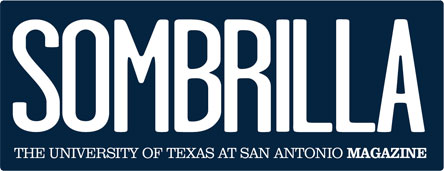
Studying the Small for a Big Impact
UTSA researchers develop a possible new method for early detection of breast cancer
Consider a future in which just a sample of saliva could be tested to detect breast cancer, even in early stages. And now, consider that the test could be done using a portable piece of equipment, or even be used for patients already undergoing treatment to monitor progress. That is the hope of Ekaterina Vinogradova and a team of researchers in UTSA's Department of Physics and Astronomy, especially since studies have revealed that techniques such as mammography are not adequate for woman who are younger than 40.
Working in conjunction with researchers at the University of San Luis Potosí in Mexico, Vindogradova and the team mixed silver nanoparticles with saliva and then examined the sample using a technique called surface-enhanced Raman spectroscopy, which in very basic terms means they could obtain unique "fingerprints" of molecules in that sample. The obtained fingerprint of sialic acid made it possible for the team to determine if increased levels of this acid were present.
"The idea of using nanoparticles is you use just a little bit to test and it has a big effect," says Vinogradova. "We have advanced medicine in the U.S., but not everywhere around the world has that. The idea for breast cancer early detection was to develop something simple that's not expensive but also can be taken into places that don't have access to current methods."
UTSA's team is working under physics and astronomy department chair Miguel José Yacamán, who is also a Lutcher Brown Distinguished Chair. As research instrumentation coordinator for the department, Vinogradova manages some of the advanced instrumentation in the Kleberg Advanced Microscopy Center as well as doing her own research and supervising students.
A paper on her early detection research was published last year, but a research group at the University of San Luis Potosí is continuing the study. An interdisciplinary group consisting of chemists, physicists, material scientists, and oncologists is already testing the technique in breast cancer patients and is developing the protocols. The team has established the sialic acid concentration in healthy patients and have sorted out other factors that can also increase the concentration of this acid.
The UTSA team has applied for a patent on the method, and Vinogradova can envision this method revolutionizing the way breast cancer is detected. "It's just saliva. It's noninvasive; it's easy to analyze," she says. "Just think of the possibilities if you could take this test anywhere."
